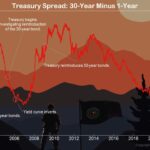
By Smeilov Sergey @ Shutterstock.com
Big fund companies like BlackRock, led by their EGO-focused CEOs like Larry Fink, have created an entirely new industry for themselves out of pushing ESG (environmental, social, and governance) funds onto unsuspecting investors who want to make the world better with their money. While investor intentions are good, funds companies are more interested in the higher fees they can charge for saving the world than in actually driving change. The way you know that’s true is the complete mish-mash of what these fund companies consider acceptable in their ESG products.
The ratings they use for classifying ESG winners and losers are subjective, contradictory, and often ill-defined. The Wall Street Journal reports:
Another headache for investors trying to pick green stocks is the variation in how companies report climate information. Most of the biggest 500 U.S. public companies produce annual sustainability reports. The glossy documents share a taste for photos of happy employees and blooming plants. The quality and breadth of their data differ significantly, and little is audited.
Twitter Inc., which says it wants to be “good stewards to our planet,” doesn’t disclose its greenhouse-gas emissions or give a numerical target for reducing them. It says it will set a target within two years. Meanwhile, Twitter highlights efforts it has made such as removing 70,000 plastic toothbrushes from its offices.
By contrast, Microsoft Corp.’s 96-page data-heavy report breaks down its emissions into more than a dozen categories, including those resulting from energy consumption, transportation, employee commuting and the use and disposal of its products.
A Twitter spokeswoman declined to comment. Microsoft said it is “committed to transparency on sustainability.”
Berkshire Hathaway Inc., led by Warren Buffett, stands out for the paucity of its disclosure. It doesn’t report overall climate-related risks. Its Berkshire Hathaway Energy unit, which owns utilities and coal plants, said in a three-page sustainability report: “We strive to achieve net zero greenhouse gas emissions.” It put no date on the target.
Cathy Woollums, chief sustainability officer at Berkshire Hathaway Energy, said it plans to close all coal-fueled units and to have “minimal” greenhouse-gas emissions by 2050. Berkshire Hathaway Inc. declined to comment.
Tesla Inc. discloses the life-cycle emissions of a Model 3 car but not emissions for the company as a whole. Procter & Gamble releases carbon dioxide data companywide but not for individual products. Coca-Cola Co. until recently set a yearly target for reducing “drink in your hand” carbon dioxide emissions related to the production, sale and consumption of a single one of its drinks. It has since switched to a goal of reducing total emissions.
In figuring the carbon footprint of P&G’s Charmin Ultra Soft, the environmental group Natural Resources Defense Council used a calculator from a green advocacy group called the Environmental Paper Network. A P&G spokeswoman said the footprint for its product was based on “general data not specific to P&G supply chains, manufacturing, or disposal.”
A spokesman for the Environmental Paper Network said its calculator, which uses industry averages, is “a science-based, trusted, independent tool.”
Greenhouse-gas emissions fall into three categories, according to a widely used international framework. Those resulting from company operations are called Scope 1. There also are Scope 2 emissions, resulting from energy the company buys. For some companies, the most troublesome to figure are Scope 3: emissions that are related to their products but produced by their employees, suppliers and customers, such as during suppliers’ transportation.
These are a “tremendous challenge” to measure, Walt Disney Co. said in a recent report on its 2030 environmental goals, but it aims to start reporting them by the end of next year nonetheless. Energy company EOG Resources Inc. said in its 2019 sustainability report it “does not believe that it is able to calculate Scope 3 emissions with the accuracy and rigor typically required for EOG’s publicly reported data.”
Coca-Cola, in figuring emissions from employee business travel, looks at flights only; Verizon Communications Inc. includes air and rail travel; AT&T Inc. counts emissions from employees’ air, rail and car travel and is looking at adding travel with ride-share companies.
Ben Jordan, senior director of environmental policy at Coca-Cola, said for a global corporation, air travel is much more significant than any other mode. Verizon said it plans to expand its reporting to emissions from rental cars, taxis and hotels. AT&T declined to comment.
Pushing America’s largest companies to focus their efforts on meeting the fuzzy goals of activist fund managers isn’t the best way to drive the American economy forward or to create shareholder value.
Action Line: Avoid the ESG fund mirage, and instead invest in a portfolio of individual stocks. If you need help, I would love to talk with you.
E.J. Smith - Your Survival Guy
Latest posts by E.J. Smith - Your Survival Guy (see all)
- “Happy I Found Richard C. Young’s Intelligence Report” - April 16, 2024
- Residents Lose Faith in Blue Cities - April 16, 2024
- Want to Make and Keep Generational Wealth? - April 16, 2024
- Your Retirement Life: Watching The Masters and More - April 15, 2024
- Fight Food Inflation with Gold - April 15, 2024














